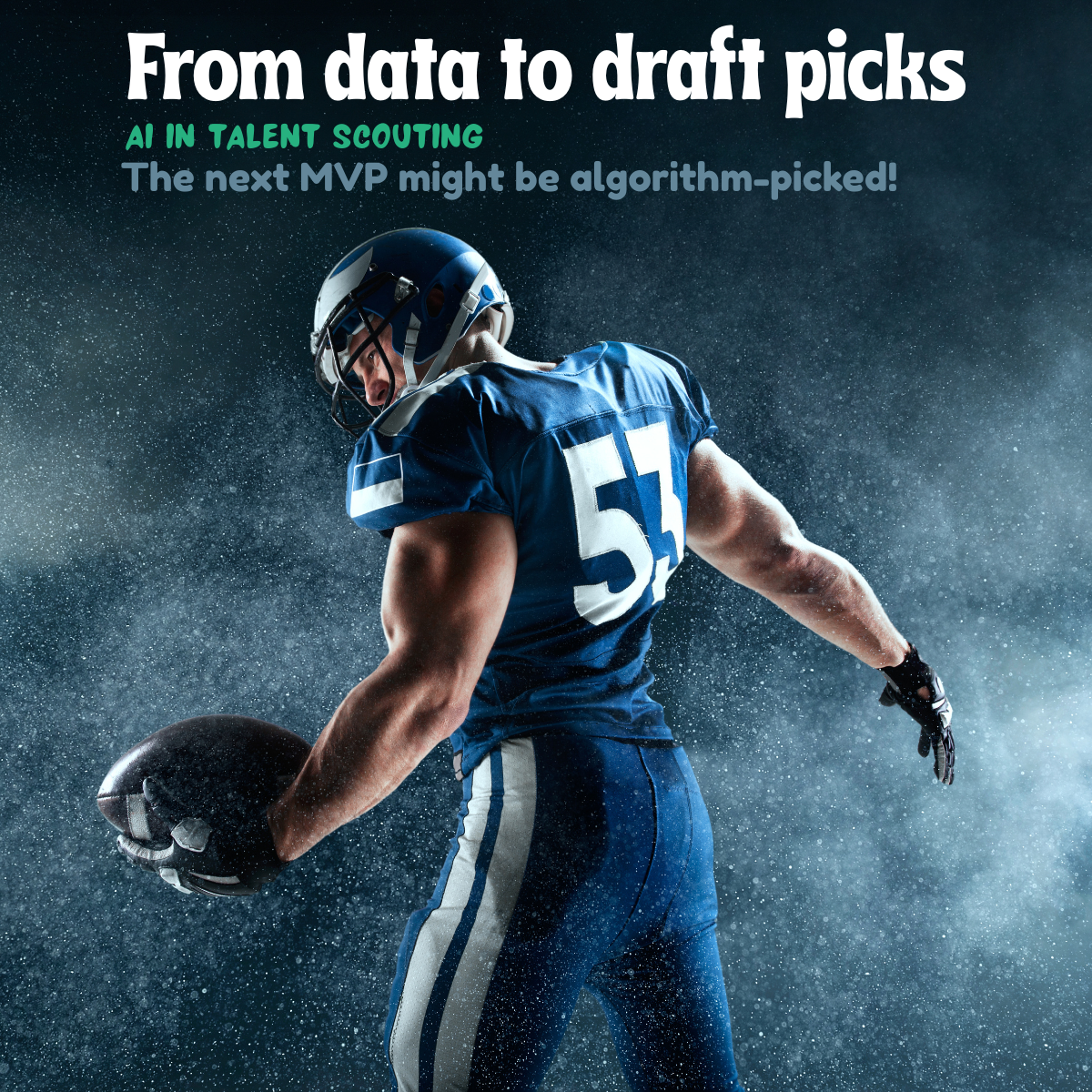Posted At: Aug 09, 2025 - 399 Views

🧠 AI-Driven Scouting: Finding the Next Superstar
In sports, one great player can change everything. But what if you didn’t need to rely on gut instinct or chance to discover them? What if data and artificial intelligence could help you spot the next Messi, Serena, or Mahomes—before the world knows their name?
That’s the promise of AI-driven scouting, an emerging frontier where machine learning, big data, and video analytics converge to revolutionize how talent is identified, evaluated, and developed.
⚽ What Is AI-Driven Scouting?
AI-driven scouting uses algorithms to analyze player data—from stats and biometrics to video and movement patterns—to find undervalued talent or predict future performance. Instead of relying solely on human observation, scouts and coaches now get insights backed by millions of data points.
From professional leagues to youth academies, AI is transforming how teams make decisions around:
- Recruiting athletes
- Evaluating player potential
- Comparing performance across levels
- Reducing risk in high-stakes signings
🔍 What Does the AI Analyze?
AI systems are only as good as the data they feed on. In sports scouting, here’s what’s typically processed:
📊 Performance Statistics
- Goals, assists, tackles, rebounds, completion rates
- Game-by-game trends and consistency
- Advanced metrics like Expected Goals (xG) or Player Efficiency Rating (PER)
🎥 Video Analysis
- Motion tracking (speed, reaction time, positioning)
- Play recognition (e.g., how a striker finishes under pressure)
- Spatial awareness (where players move during different phases of the game)
📍 Biomechanical & Physiological Data
- Sprint speed, acceleration, stamina, agility
- Wearable data: heart rate, VO2 max, fatigue levels
- Injury history and stress load monitoring
🧠 Psychological and Behavioral Insights
- Reaction under pressure (from facial expressions or in-game decisions)
- Team vs solo tendencies
- Leadership indicators (communication, huddling, decision-making)
🤖 How the AI Works: Key Technologies
1. Machine Learning (ML)
ML models are trained on thousands (sometimes millions) of player data profiles to spot patterns—such as which traits most often lead to long-term success.
Example: A model might learn that a midfielder’s pass accuracy + stamina + decision-making in tight spaces correlates highly with elite-level progression.
2. Computer Vision
Used to process game footage and extract insights from video—without needing manual tagging. Systems can now identify player movements, ball trajectory, body posture, and interaction dynamics.
3. Predictive Analytics
AI can forecast how likely a player is to:
- Improve within a season
- Fit into a certain style of play
- Be injury-prone
- Handle pressure in high-stakes games
4. Natural Language Processing (NLP)
Some tools now analyze interviews, post-game comments, or social media behavior to assess mindset, leadership, and maturity.
🏈 Real-World Use Cases
⚽ FC Midtjylland (Denmark)
Pioneered data-driven scouting to find overlooked players using algorithms and models—leading to successful low-cost signings and multiple league titles.
🏀 NBA’s Second Spectrum
Used by multiple NBA teams to analyze every move in a game, assigning metrics like “shot probability” and “defensive disruption” for deeper player evaluation.
🏉 NFL’s Combine Data Analysis
Teams now use historical performance and biometric data to predict injury risk and performance levels—adding AI models to their draft strategy.
⚾ Moneyball 2.0
Major League Baseball teams are blending sabermetrics with AI-enhanced video analysis to evaluate prospects far beyond traditional batting averages or home runs.
🚀 Advantages of AI in Scouting
✅ Uncover Hidden Talent
Find overlooked or underrated athletes who lack exposure but show strong data indicators of future greatness.
✅ Reduce Bias
Remove human subjectivity or scouting favoritism; focus on facts, not flash.
✅ Scale Scouting Efforts
AI can scan thousands of players across leagues, academies, or regions simultaneously—far beyond the reach of human scouts.
✅ Future-Proof Decisions
Predict how a player will evolve, not just how they perform today.
✅ Improve Team Fit
Match player profiles to team styles, coach preferences, and locker room dynamics.
⚠️ Challenges & Limitations
While AI is powerful, it’s not magic. Scouting still needs a human touch to evaluate intangibles like:
- Motivation
- Mental toughness
- Cultural fit
- Passion for the game
Other challenges include:
- Data availability in lower leagues or developing countries
- Privacy and consent concerns over biometric tracking
- Over-reliance on algorithms, ignoring human intuition or leadership traits
The best programs use AI + human expertise—not one in place of the other.
🧭 What’s Next in AI Scouting?
The future of scouting will likely combine:
- Live in-game analytics streamed in real time
- AI-powered highlight generation for instant prospect review
- Virtual scouting platforms with 3D models of player movement
- Emotion + language tracking during interviews and gameplay
Soon, entire scouting departments could be augmented by digital agents—virtual assistants trained to surface high-potential players from anywhere in the world.
AI-driven scouting is not just a tech upgrade—it’s a fundamental shift in how we find the next superstar.
It makes talent evaluation faster, fairer, and more accurate—especially in a sports landscape where one decision can define a season or a franchise.
Still, the goal isn’t to replace human scouts, but to empower them—with sharper insights, broader vision, and better odds of uncovering greatness.
Because the next generational athlete might not be on anyone’s radar—yet.
